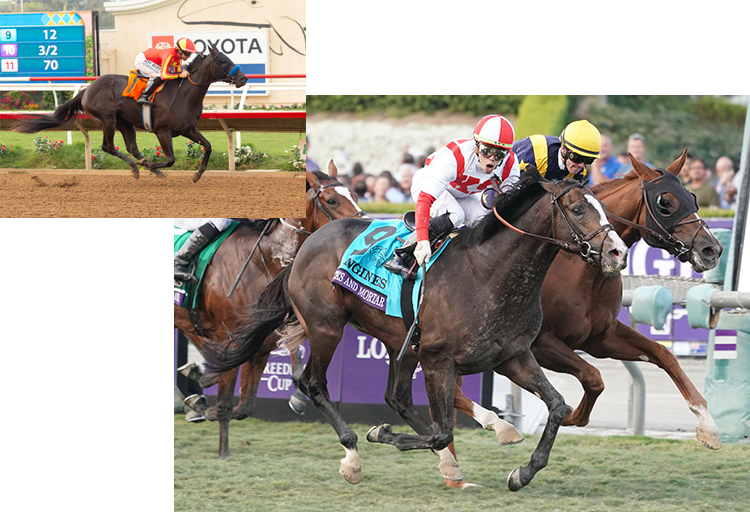

Stone Farm: For half of a century.

If you take care of the land,
the land will take care of you.

We’re trying to raise you a good horse.

We sell only what we raise.


Kudos to Arthur Hancock for his brave article of condemnation of race-day drugs for Thoroughbreds.
It takes great courage to publicly probe the issues in our industry that are slowly eroding what was once a noble endeavor.
Most folks in this business are afraid to make a public statement for fear of being ridiculed for criticism of anything that is wrong with the Thoroughbred industry.
Unfortunately, race-day drugs are just one of many insidious issues in breeding, sales preparation, racing and retirement of our horses. Let’s look at the pervasive evidence that continually invades the news and some items just in the last two weeks.
Take for example an article published recently in The New York Times, “Despite the evidence, trainers deny a doping problem.” This article was written in response to congressional testimony two weeks ago by horse-racing representatives that, “Thoroughbred racing’s drug problem was a myth.”
The evidence alluded to is that Bob Baffert was investigated by the California Horse Racing Board for the sudden deaths of seven horses in his care between 2011 and 2013.
The investigation revealed that Baffert was giving every horse in his barn the thyroid drug, thyroxine, in spite of the fact that none of the horses had a thyroid problem.
“Baffert told investigators that he thought the medication would help ‘build up’ his horses, when in actuality the drug causes weight loss and cardiac alterations,” the article said.
After the death of the seventh horse, Baffert stopped using the drug, which he instructed his veterinarians to use in the first place. It is in direct opposition to the American Association of Equine Practitioners for a trainer to tell his veterinarians what to prescribe.
Another example in the Times article, which is more common, involves Todd Pletcher and a horse named Coronado Heights, who broke down at Aqueduct and had to be euthanized. The horse had chronic joint disease and had been given 17 injections in the seven days before.
Horses with chronic structural afflictions should be forced into retirement from the rigors of racing, because it is difficult enough to hold together a sound horse.
But there is no mechanism in place with a set of rules and regulations to guide trainers or to at least give trainers criteria that can be shown to owners for a graceful way to say a horse should be retired instead of run to death. But, of course, there is no money in that.
These examples are just the tip of the iceberg of the multitude of issues that plague horse racing and that erode the confidence of our fan base. These problems cannot be further ignored and denied, as Phil Hanrahan, CEO of the National Horsemen’s Benevolent and Protective Association, said to Congress that the drug problem is “a problem that does not exist,” as quoted in the Times.
The article further states that Congress wants to use the United States Anti-Doping Agency to clean up horse racing’s use of drugs. Rep. Joe Pitts, a Pennsylannia Republican, is quoted: “Despite promises and assurances, state and industry groups have been unable to come together to develop uniform rules to police doping.”
Pitts has co-sponsored the Horseracing Safety and Integrity Act. All horsemen should support this endeavor.
Not only are we driving away fans of our sport, but we are also losing many fine people in this business with hard-earned knowledge of horses and racing and violations. Men like Bernie Hettel, former executive director of the Racing Commission and chief steward for racing in Kentucky for over 25 years.
Hettel, who was my boss, was the most knowledgeable man I know concerning horse racing and was present at almost every race in Kentucky while he was in charge; he rarely missed any infraction or neglect by horsemen at the track.
This industry needs many more people like him to keep racing safe and above board. Yet he was forced from office when politics took the reins of the commission, then chaired by a car dealer. That shocking event drove home to me how poorly run horse racing has become in general.
Hettel was the rare kind of individual who could have stepped in at the starting gate at the Preakness to have scratched Barbaro when he broke through the front doors before the race. That horse was telling everyone that he was sore, and he did not want to race, period.
Racing needs more people with that kind of knowledge and the gumption to stand up and say that there is something wrong here, whether it be abuses with drugs or the many other oversights that exist.
At issue: Nov. 27 commentary by Arthur Hancock, Why protect pit bulls but not horses?
